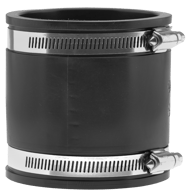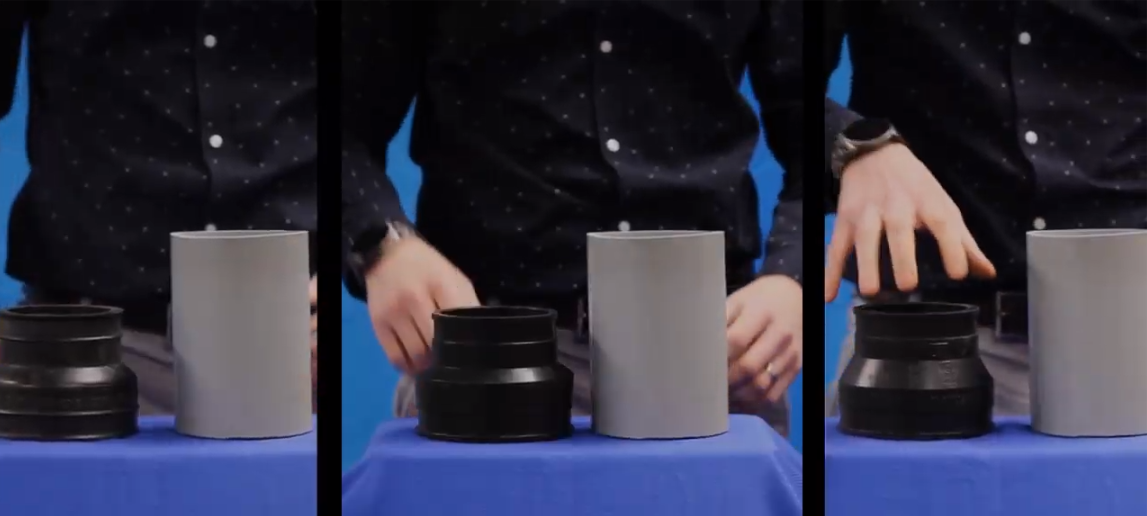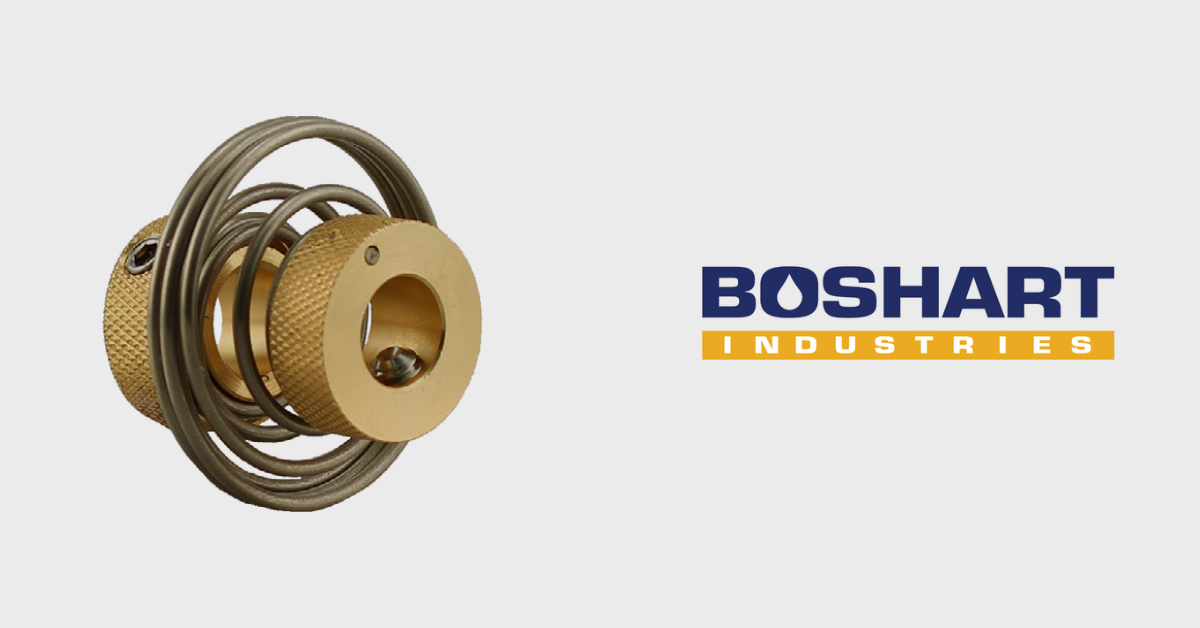
Flexible Couplings are a Plumbing product that can be used in many different DWV (Drain, Waste & Vent) applications and industries. They are used for attaching pipes together in various situations. Although Flexible Couplings are a fairly simple plumbing accessory, they are not all made equal. It is important to use high-quality couplings when installing flexible couples to ensure you can trust them when they are no longer accessible.
In this blog, we are going to go over 3 features to look for the next time you need to use Flexible Couplings.
Fit & Function
One of the most frustrating parts of installing a Flexible Coupling is getting it to initially fit on PVC pipe. Most people struggle to get these on easily because the inside diameter of the coupling is smaller than the outside diameter of the pipe. This problem becomes especially more exaggerated in cold temperatures when the couplings are less flexible.
One of the reasons that this problem exists is due to the change in pipe technology. Most of the soil and drain pipe that Flexible Couplings used to be used on were cast and ductile iron.
Now that the market has moved to mainly PVC, which has a larger outside diameter than ductile, those coupling designs are very tight, requiring the coupling to be stretched to fit over the pipe. Many companies have not changed their mold sizing over the years, which is why this is still an issue to this day.
Some manufacturers design their Flexible Couplings to have a tapered edge so that it slides on the pipe much easier. This benefit is very noticeable in everyday situations, but would be even more noticeable in cold weather. If you are installing these couplings often, the increased productivity and reduction of frustration goes a long way.
If you are a contractor who is working with PVC often, this is a feature that will benefit you greatly.
Quality of Gear Clamps
Gear Clamps are an essential part to a successful Flexible Coupling install. They hold the coupling on the pipe and ensure a leak free installation. Having the couplings assembled using high-quality stainless steel clamps is a huge benefit.
The biggest issue with lower quality clamps is that they can slip just before you get it tight enough, breaking the clamp. Over-tightening is something that people with less experience tend to do, but even the pros will do it from time to time. A good clamp will let you tighten to the 60 inch lb. spec, without fear of stripping the gears or breaking the clamp. The use of a 60 inch lb. "T" handle torque wrench to install the clamps is good practice to ensure the proper torque is applied.
The main aspect that you are looking for when evaluating gear clamps for installing Flexible Couplings is the amount of torque that can be applied before breaking. The higher this spec is, the better quality clamp you are getting.
Type of Rubber Being Used
The type of rubber that is used will differ from coupling to coupling. In most cases, this will not alter the Flexible Couplings up-front performance or quality, but over time, this is a key aspect for longevity.
Some of the rubber that is used in the market does not have anti-fungal properties. This means that if the Flexible Coupling is being installed in a place with lots of moisture, which a lot of the time they are, mold can begin to grow and potentially compromise the coupling. This is something to pay attention to especially if you know there is a lot of moisture that will be present.
In Conclusion:
Next time you are needing Flexible Couplings for a job, remember these 3 features to look for. They can help you save time, limit frustration and lead to a more reliable install.
Have further questions about this subject?
Head over to Boshart's Knowledge Base: technical product information, guidelines, and more.




![[Video] 3 Features to Look for in Your Next Flexible Coupling](https://blog.boshart.com/hubfs/35.jpg)

SHARE